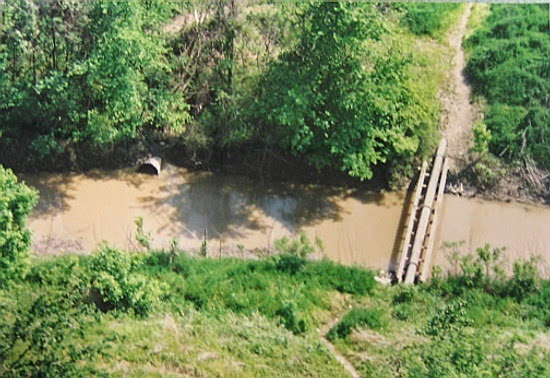How Big Name Ad Support is Fueling Online Piracy Profits
According to a new report, sites specializing in illegal content distribution are generating astounding ad revenues, with many brand name advertisers cropping up on Torrent portal sites and DDL indexes. Uncommon Journalism speaks with several experts and analysts about how primary brand advertising has turned online content theft into big business, and what possible legal ramifications may await advertisers themselves.
UncommonJournalism@gmail.com
@UNJournalism
Earlier this month, a MediaLink LLC report revealed the surprising amount of advertisement revenue generated by online piracy sites such as The Pirate Bay and BitShare. According to the report, commissioned by the Digital Citizens Alliance, websites offering pirated content collected at least $227 million through ads last year, with some of the largest BitTorrent portal sites generating upwards of $6 million in advertising revenue.
The report, titled “Good Money Gone Bad: Digital Thieves and the Hijacking of the Online Ad Business,” evaluated nearly 600 websites that specialized in distribution of copyright protected material. Their ad revenues, the report states, has allowed many sites to produce profit margins ranging from 80 percent to 94 percent. Among the largest sites -- designated by MediaLink as operations receiving more than 5 million visitors per month -- nearly a third contained advertisements for “blue chip premium brands,” while advertisements for secondary brands, like gaming and content aggregation sites, appeared on about 40 percent of websites offering pirated content.
“Creating a content theft site is inexpensive and requires little technological expertise, making ad-supported content theft ‘easy money’ for bad actors,” the report states. “Exacerbating the problem for rights-protected content owners and many unwitting premium and secondary brand advertisers are the concurrent trends of a dramatically growing online global universe hungry for cheap, new content and the explosion of programmatic buying and selling of advertising.”
Highly illegal and highly profitable
For the report, MediaLink targeted live websites with a baseline of at least 25 Digital Millennium Copyright Act (DMCA) takedown requests during the third quarter of 2013. Using comScore data and Integral Ad Science ratings, researchers then determined ad revenue projections and segment sample sizes. Sites primarily featuring user-generated-content, pornography and non- television or film downloads were excluded from the evaluation.
MediaLink broke websites down into four categories: portals to peer-to-peer (P2P) file sharing systems like BitTorrent, video streaming host sites, and both direct download (DDL) host and linking sites. From there, the websites were classified according to monthly unique visitors, with sites receiving less than one million monthly visits categorized as “small” and those receiving between one and five million monthly visits categorized as “medium.”
The aggregate quarterly ad revenue for the sample rounded out to about $57 million, with BitTorrent and DDL linking sites accounting for about four-fifths of total ad-supported revenue. With relatively small operating costs -- mostly attributed to hosting fees -- even streaming video host sites with lighter traffic were found to prosper, with sites of the like receiving less than one million monthly visitors posting profit margins that teetered on the brink of 80 percent.
“This is a big, big business”
According to the report, programmatic placement ads for companies like Google, Microsoft and Amazon were all found on sites providing access to pirated content.
“Many players in the advertising ecosystem profit from placement of ads on content theft sites, whether for premium brands or others,“ the report reads. “Programmatic placement may involve exchanges, networks, publishers and agencies, and each link in the chain offers weaknesses that can be exploited.”
Adam Benson, communications director at the Digital Citizens Alliance, said he would like to see advertisers take tougher stances against content theft sites. “Companies invest billions and incredible numbers of hours building a brand,” he told Uncommon Journalism. “It seems that one quick way to degrade the quality of a brand is by being associated with criminals that are taking $227 million dollars by stealing content online.”
Sans the ad revenue, Benson believes some piracy sites would disappear. “While these criminals don’t seem to mind taking money out of the pockets of artists and workers in the creative industry, I doubt they’d be so happy about working if they weren’t getting paid,” he said.
However, Benson said that without immediate action, ad-supported content theft will continue to be a growth industry. “Our number shows that’s no longer just a theory,” he said. “This is a big, big business.”
The report, he hopes, will encourage advertisers to intensify their efforts to combat online piracy. “We hear from people that concern about ad-supported content theft is growing,” he stated. “That was even before people learned that some of the biggest and baddest content thieves were making $4.4 million a year.”
And it’s not just advertisers that could be harmed, as Benson said ads appearing on piracy sites are likely to contain malware and spyware. “Consumers see the names of products they know and trust, often never suspecting the danger that lurks below the ad,” he said. “We see a problem for companies and consumers both if this is left unaddressed.”
The Problem of Transparency
Wenda Harris Millard, MediaLink President and COO, said that advertisers take “double hits” when their goods and services are promoted on piracy sites. Not only are primary and secondary brands tarnished by appearing alongside ads for porn, human trafficking and links containing malware, but she also believes advertisers who do aren’t getting their money’s worth for the placements, either. “The advertisers are getting ripped off as the content creators are getting ripped off, because they think they’re paying good money to reach a certain type of audience,” Millard said. “Instead, their ads are being seen by consumers of stolen content, many of them in countries the brands aren’t trying to reach.”
Echoing Benson, Millard said that ad revenue is certainly keeping many of the smaller piracy sites -- whom may not be able to cover their overhead costs otherwise -- in business. “It’s not a cottage industry where people make a few dollars,” she said. “Even small sites can make $100,000 in a year, and it’s easy money with high margins.”
A lack of transparency in the ad ecosystem, she said, proves a stumbling block for many brands, whom may wish to remove their ads from online piracy sites. “The place to start is for legitimate brands to insist to their agencies and to the networks and exchanges they deal with that they absolutely, positively don’t want to show up on pirate sites,” she said. “And then to use the power of their dollars to enforce it if their vendors don’t do what’s right.”
Not until recently, Millard said, has the issue of ad supported online piracy been broadly recognized. “The associations representing advertisers and ad tech can lead the charge, but it will take collaborative action by all stakeholders to develop solutions needed to solve this,” she said.
Content theft sites, she said, are just one aspect of a bigger fraud and transparency issue regarding online advertising, which also entails ad collisions and other forms of suspicious activity.
“This should concern all of us in the industry because it is devaluing digital media,” she concluded. “If we fail to address these issues, marketers will move their money elsewhere.”
What are the legal risks for advertisers?
Jessica Pena, a staff attorney for the Tucson, Ariz.-based DMCA Force, said that a shift in United States case law could possibly make piracy site advertisers liable for contributory infringement.
“The Copyright Act does not expressly impose liability for contributory infringement,” Pena stated. “Therefore, the U.S. Courts have been developing the law in this area.”
For piracy site advertisers to be held liable, she said they had to have knowledge of infringing activity and materially contributed to the piracy.
“There is an argument that advertisers are ‘turning a blind eye’ to their participation and involvement with pirate sites by contracting with third party ad broker services to place their ads,” Pena said. “Advertisers have financial motives for this willful blindness.”
Regarding material contribution, she said courts could feasibly argue that advertisers are indeed contributing to online piracy sites by more or less funding them, while simultaneously profiting from their own ad placements.
“Pirate sites are turning a large profit from their illegal activities and are more than likely participating in the risks due to the financial returns they receive from advertisers,” Pena said. “If an advertiser was found liable for having knowledge of the infringing activity and encouraging the activity by providing the financial means for pirate sites to operate, there would almost be an immediate change in their business relations with pirate sites.”
Is a “Groundswell” Against Online Piracy Emerging?
While no advertisers in the U.S. have been found liable for aiding and abetting pirate activity, Liam Maddock, director of special projects and new business development for Tekco Management Group LLC, believes that could easily change.
“If there’s even a slight shift in current case law, we could see many advertisers suddenly finding themselves being listed as defendants in these copyright cases that spring up from time to time,” he told Uncommon Journalism. “From a legal standpoint, many of these sites would not exist without the advertising revenue…they’re paying for the servers, they’re paying for the bandwidth, they’re paying for the backend systems.”
Like Benson and Millard, Maddock believes if ad support for some piracy sites was cut off, they would likely be unable to continue operating. However, he said that many networks, despite knowing where their advertisements are being placed, may be hesitant to remove their ads from content theft websites.
“They like pirate sites, because they have great traffic,” Maddock said. “They have tons of clicks, people stick to them because they’re looking for what they want.”
Advertisers, especially those that are negatively impacted by piracy, should have “zero tolerance policies” for ad placements on piracy sites, he said.
“I have had the embarrassing situation of seeing ads for one of my clients on a P2P that was pirating their software,” Maddock stated. “And I’m sure that they have no idea that the ad network they were contracted with was putting placements there.”
Brand equity itself, Maddock said, could be one of the greatest victims of ad-supported online piracy. “It’s one thing if you sell only a physical product,” he stated, “but if I am on a site, doing something illegal, and I get malware in my computer, and your name was all over that page? My impression of your product is going to be diminished.”
Maddock, however, believes a “groundswell” is currently underway, with more advertisers and networks assessing ad supported online piracy as a more serious threat.
“Many people are starting to just realize the detrimental effect it’s having,” he said. “I don’t think, as a culture, we expected to see a point where we were causing our creators to not be able to make money creating.”
“Eventually,” he concluded, “we’re going to see the brands who have profited off this start to suffer.”
Uncommon Journalism, 2014.




Comments
Post a Comment